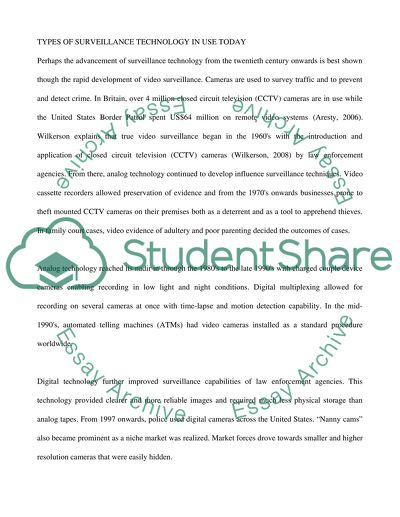Cite this document
(Surveillance Technology Term Paper Example | Topics and Well Written Essays - 2247 words - 1, n.d.)
Surveillance Technology Term Paper Example | Topics and Well Written Essays - 2247 words - 1. Retrieved from https://studentshare.org/technology/1576694-surveillance-technology
Surveillance Technology Term Paper Example | Topics and Well Written Essays - 2247 words - 1. Retrieved from https://studentshare.org/technology/1576694-surveillance-technology
(Surveillance Technology Term Paper Example | Topics and Well Written Essays - 2247 Words - 1)
Surveillance Technology Term Paper Example | Topics and Well Written Essays - 2247 Words - 1. https://studentshare.org/technology/1576694-surveillance-technology.
Surveillance Technology Term Paper Example | Topics and Well Written Essays - 2247 Words - 1. https://studentshare.org/technology/1576694-surveillance-technology.
“Surveillance Technology Term Paper Example | Topics and Well Written Essays - 2247 Words - 1”, n.d. https://studentshare.org/technology/1576694-surveillance-technology.


